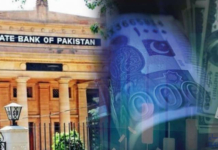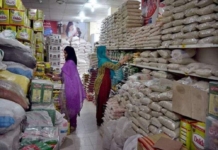Stakeholders are worried that the rupee’s decline to new lows will expose Pakistanis to another round of inflationary effects that will disproportionately affect the lower and middle classes.
The sharp devaluation of the local currency, which has lost approximately 20% this year and is among the worst performers in the world, would hurt every area of the economy.
The value of the rupee has fluctuated in the past and it will continue to do so in the future, but this time the curve has remained in an upward trend for quite some time.
The economists Ankur Shukla and Abhishek Gupta have collated therefor Pakistan reasons why the Pakistani rupee has fallen in value in a Bloomberg Economics report.
The International Monetary Fund (IMF) bailout is necessary for Pakistan to avoid default in the fiscal year beginning in July, according to analysts been stagnant, but there is an increasing possibility that it won’t be provided. Asa result, the capital is reportedly leaving Pakistan. Since the aid has beenstagnant since November, they surmised that political upheaval was one of the causes for the Fund’s stumbling.
They also emphasized the rupee’s influence on political unrest, claiming that since Pakistan Tehreek-e-Insaf (PTI) Chairman Imran Khan was removed as prime minister by a no-confidence vote in April of last year, the country’s leadership has been unstable.
They stated that Khan’s arrest this month has escalated the face-off between him and the government, as well as the army, and cited the fact that the rupee hit a record low of 299 to the dollar after Khan was imprisoned but recovered its losses and stabilized at 285 following his release.
The rupee is expected to fall by another 20%, according to some economists, who are raising alarms about a catastrophic plunge. The currency will probably depreciate much further, according to both economists, if Khan and the government continue to argue and if the IMF decides against lending money.
Bond investors are also becoming more anxious as their required premium yield to hold Pakistan dollar bonds over US Treasury securities has increased by more than 35% points this month, setting a record.
Dollar-denominated bonds issued by Pakistan are now trading at distressed prices; 2031 notes are quoted at roughly 34 cents on the dollar.
Despite severe limitations, the nation’s dollar reserves, which were at $4.3 billion in mid-May, are insufficient to fund even one month’s worth of imports.







